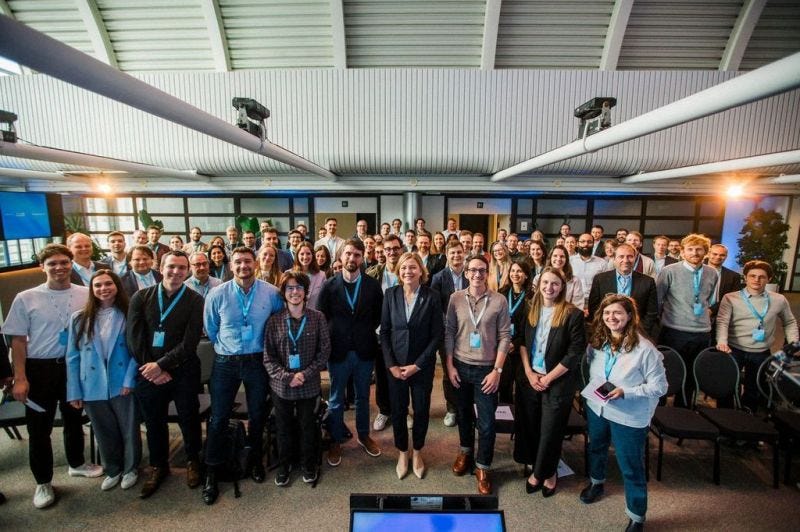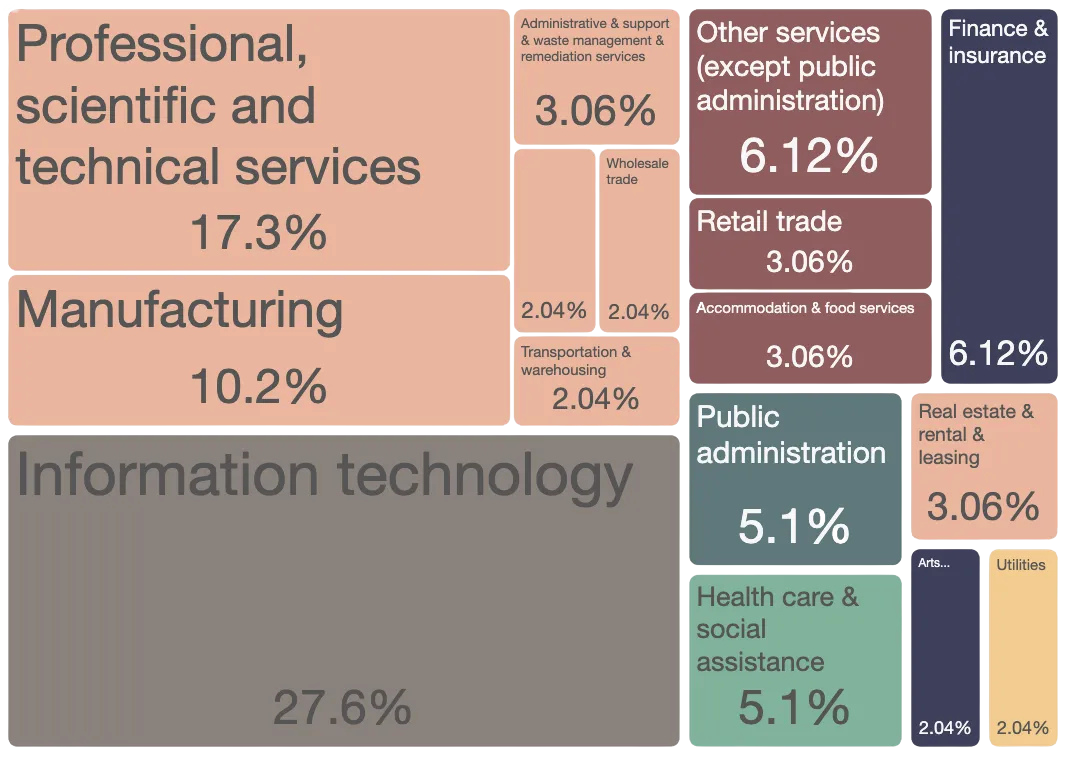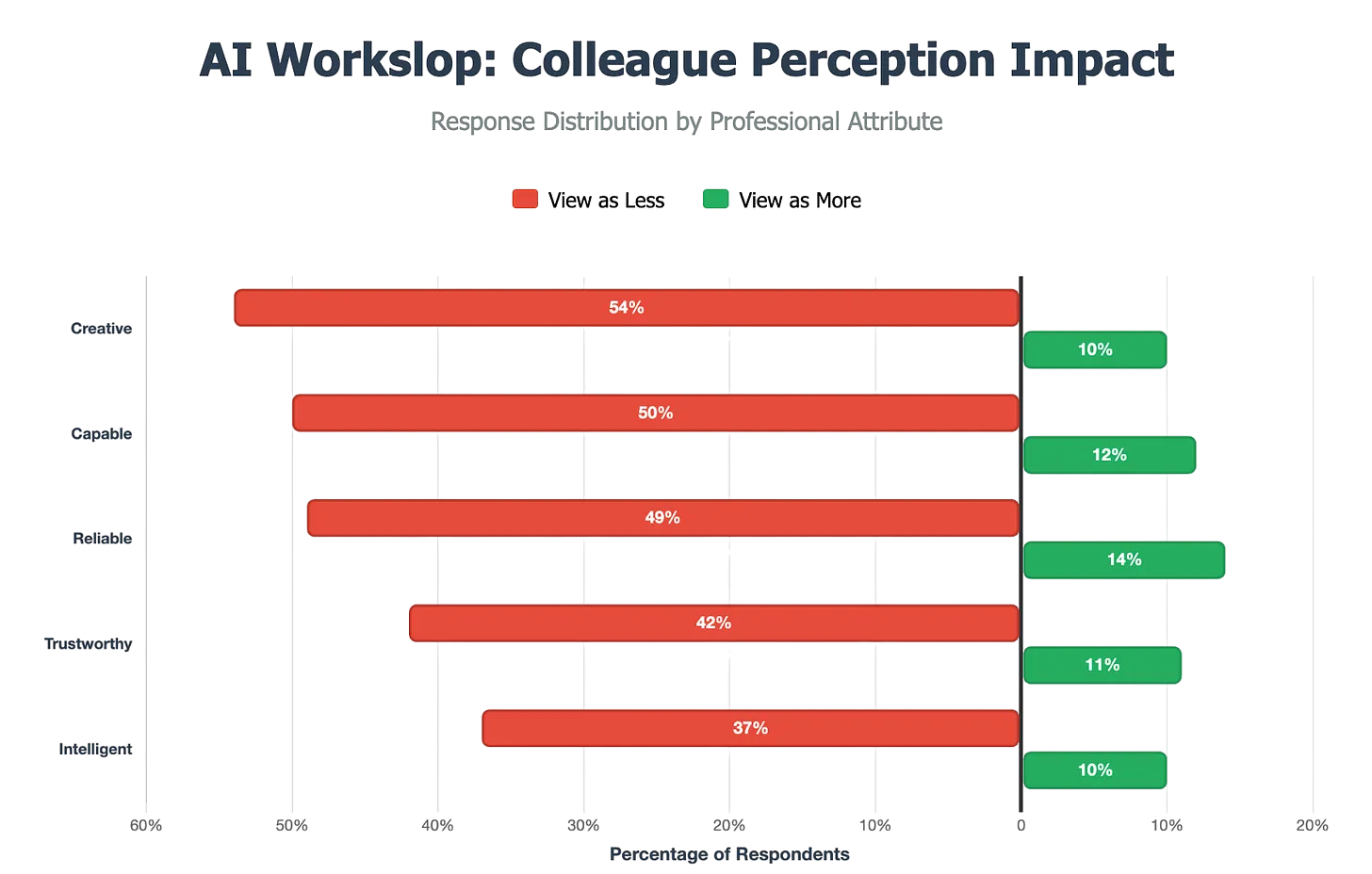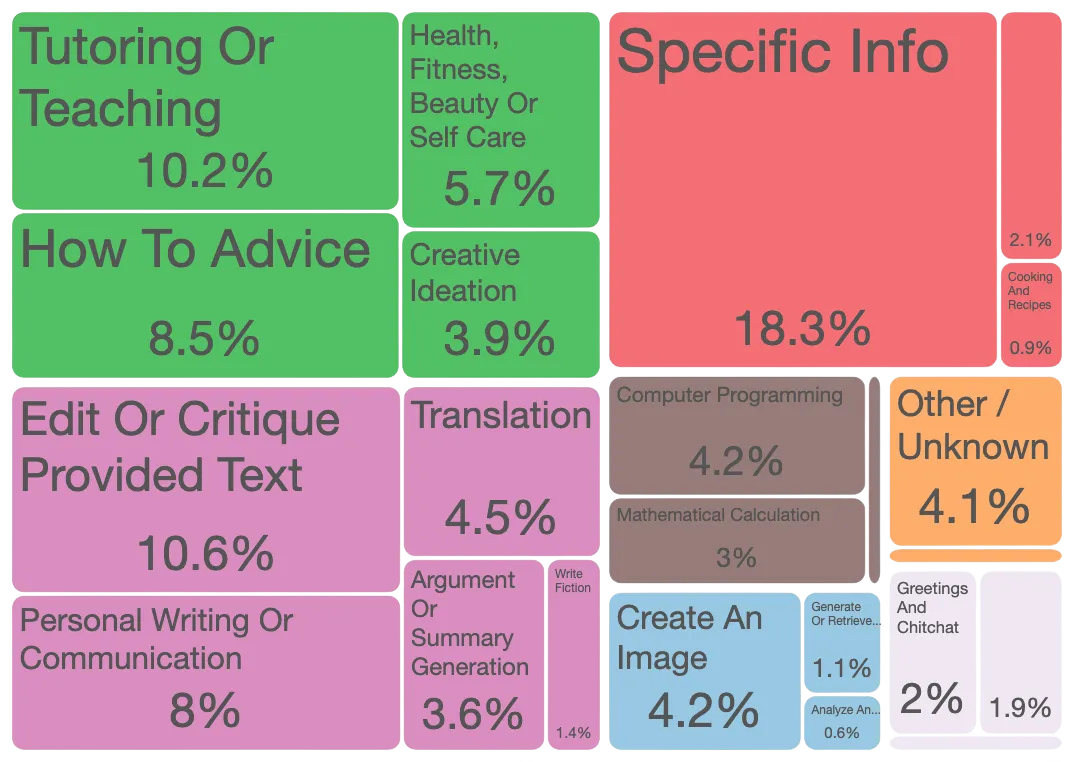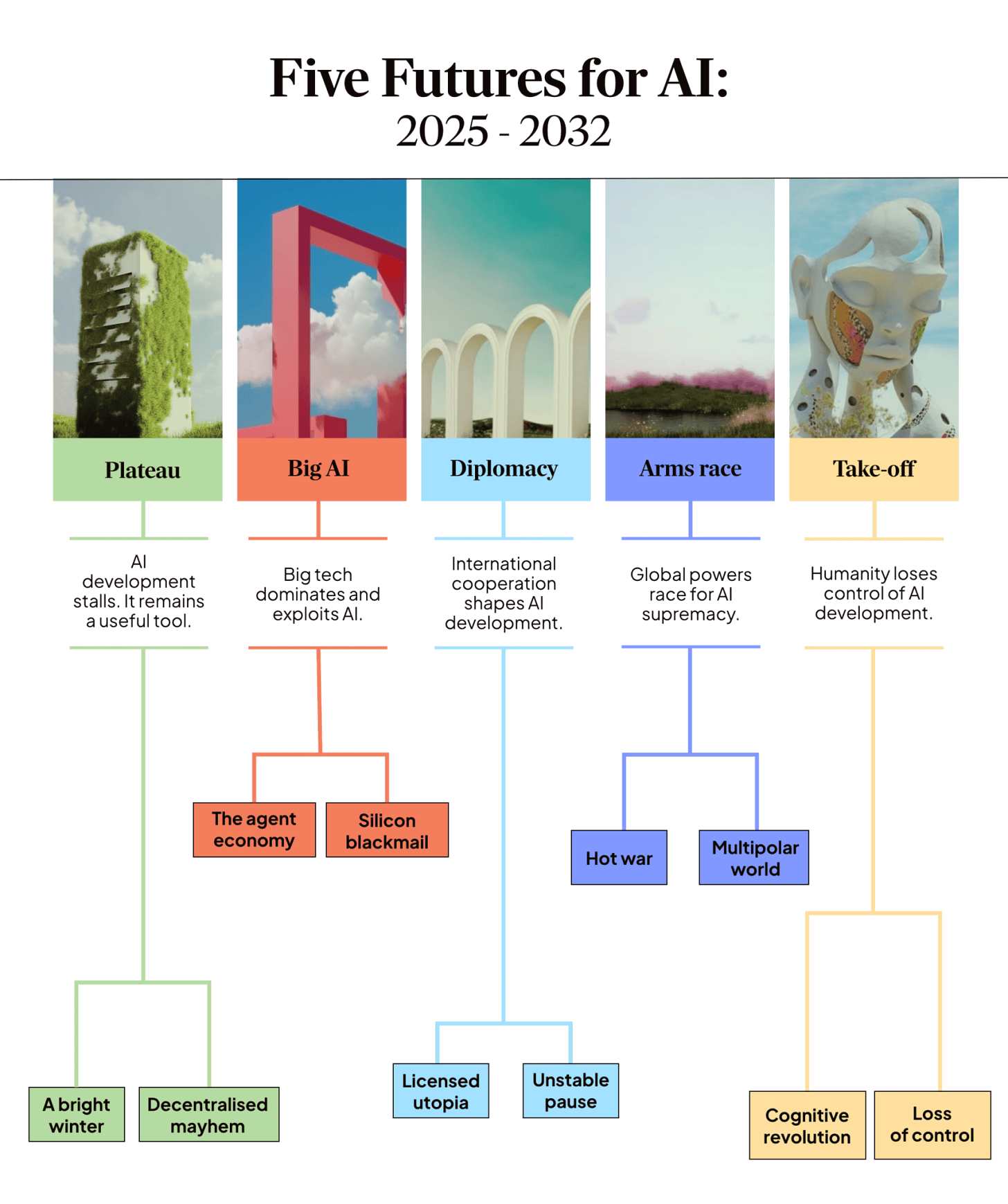If you’re looking for something to read this week alongside your morning coffee (or perhaps as a break from those endless AI implementation meetings), we’ve got you covered with the latest insights from the AI World team. In case you’re short on time, here’s the quick take before we dive deeper:
Hacktivate AI in Brussels: Europe’s first AI policy hackathon delivered 17 concrete proposals to accelerate adoption.
Adoption divide: IT and manufacturing lead in ChatGPT use, while healthcare, retail, and transport lag behind.
The cost of “Workslop”: AI-generated but low-value content drains $9M annually in large organizations.
How people actually use ChatGPT: most usage centers on writing help and information lookup, while technical coding and creative self-expression constitute a smaller, but meaningful, share of use.
Advanced AI Futures: how advanced AI development could unfold across five distinct scenarios
Now grab your beverage of choice and let’s dive in!
1. Hacktivate AI: When Policy Meets Action in Brussels
On September 23rd, the AI World team participated in Europe’s first policy hackathon designed to accelerate AI adoption across the European economy. Rather than producing traditional position papers, Hacktivate AI brought together entrepreneurs, policymakers, startups, business leaders, academics, and civil society to prototype actionable solutions in real-time.
Over 60 policy hackers collaborated across seven tracks, addressing workforce readiness, adoption incentives, technical bottlenecks, AI for government, monitoring and reporting, macro-policies, and ecosystem collaboration.
The event featured interventions from Executive Vice President Henna Virkkunen and MEP Eva Maydell, alongside insights from SAP, the European Central Bank, the EU AI Office, and OpenAI.
The outcome? 17 concrete policy proposals that demonstrated what’s possible when Europe’s brightest minds collaborate with shared purpose. Our team (including Pierre-Alexandre Balland as track captain) engaged directly with the policymakers and innovators shaping Europe’s AI landscape, and the energy was palpable. As we await the comprehensive report, one thing is clear: Europe can lead in AI adoption when bold ambition meets practical, evidence-based solutions.
2. The Department Divide: How Different Teams Unlock AI Gains
Not all teams are created equal when it comes to AI adoption. New analysis by OpenAI reveals that ChatGPT adoption varies dramatically across industries and departments, with Information Technology, Professional & Scientific Services, and Manufacturing leading the charge. Meanwhile, sectors like healthcare, retail, construction, and transportation lag considerably behind.
The department-level view is equally revealing. Four activities dominate across the board (writing, research, programming, and data analysis) but usage patterns diverge sharply:
Technical teams (engineers, analytics, IT) strongly focus on coding and analysis
Go-to-market roles (marketing, communications, HR) rely more on writing and content generation
Designers surprisingly leverage both programming for prototypes and media generation
Project managers act as hubs, using ChatGPT for texts, workflows, and media across functions
Perhaps most significantly, ChatGPT is breaking down traditional skill barriers: programming is becoming accessible to designers and non-technical roles, while effective writing is within reach of employees beyond dedicated content teams. However, advanced functionalities like complex reasoning and autonomous agents remain largely confined to technical teams, suggesting broader adoption depends not just on personal readiness but on regulatory frameworks, organisational culture, and shared standards.
3. The Hidden Cost of “Workslop”
While AI adoption has nearly doubled to 40% of workers since 2023, organisations face a troubling new phenomenon: workslop - AI-generated content that appears professionally productive but shifts cognitive burden to colleagues while delivering little value.
A BetterUp Labs and Stanford Social Media Lab study surveying 1,150 U.S. desk workers found that 15.4% of workplace content now qualifies as workslop, costing organisations $186 per employee monthly. For a 10,000-person company, that’s $9 million annually.
The social costs are equally concerning. When employees receive AI-generated content from colleagues:
54% perceive the sender as less creative
42% as less trustworthy
37% as less intelligent
Workslop incidents require an average of 1 hour and 56 minutes to resolve, with recipients feeling annoyed (53%), confused (38%), and offended (22%). The key distinction: workslop requires virtually no effort to create, enabling unprecedented ease in generating professionally-formatted but ultimately useless content.
This aligns with MIT Media Lab research showing 95% of generative AI pilot projects produce no measurable return despite $30–40 billion in enterprise investment. The challenge isn’t the technology itself but how organisations implement AI tools faster than they develop frameworks for meaningful use. Success depends less on tool sophistication and more on the wisdom of human deployment.
4. How ChatGPT Is Actually Being Used
New studies from both Anthropic and OpenAI reveal surprising patterns in how people actually interact with AI chatbots. Rather than the widely-reported technical coding and creative writing use cases, most ChatGPT interactions fall into three primary categories: practical guidance (teaching, advice, ideation), writing (communication, editing, critique), and seeking information (specific facts).
The data shows that technical help and self-expression together account for less than 12% of actual usage. This suggests people turn to chatbots for a far broader variety of everyday purposes than their most obvious applications would suggest. The gap between perceived and actual use cases has important implications for product development and adoption strategies.
5. Advanced AI Futures
An analysis by the Centre for Future Generations shows how advanced AI development could unfold across five distinct scenarios, designed as a framework to help policymakers navigate the uncertainties of AI’s technical progress and governance.
The scenarios are based on two key variables: the pace of AI progress (either advancing rapidly towards autonomous, general-purpose AI, or plateauing at narrower applications) and the distribution of AI development power (either centralised under a few actors, or decentralised among many).
The scenarios were chosen not only for plausibility but as thought-provoking, diverse jumping-off points for smarter policy planning and decision-making. As concerns manifest differently depending on which development pathway AI follows, the researchers developed a framework exploring five scenarios to capture the range of possible futures.
As critical junctures lie ahead, the researchers prioritise resilience over prediction. Essentially, effective strategies must be adaptable and work across multiple scenarios as initial conditions evolve. Their approach acknowledges uncertainty while providing actionable guidance: identify the governance mechanisms, safety protocols, and institutional structures that will remain robust regardless of which scenario unfolds.
What’s Next?
The theme connecting this week’s stories is clear: the gap between AI’s promise and its practical implementation continues to widen. Success depends not on deploying more AI tools but on developing the frameworks, cultures, and policies that enable meaningful use.
For all AI World news, research, and insights, head to aiworld.eu. And if you haven’t already, subscribe to receive our weekly roundups directly in your inbox.
Have a great weekend ahead, and may your AI deployments be thoughtful and your workslop minimal!
The AI World Team


